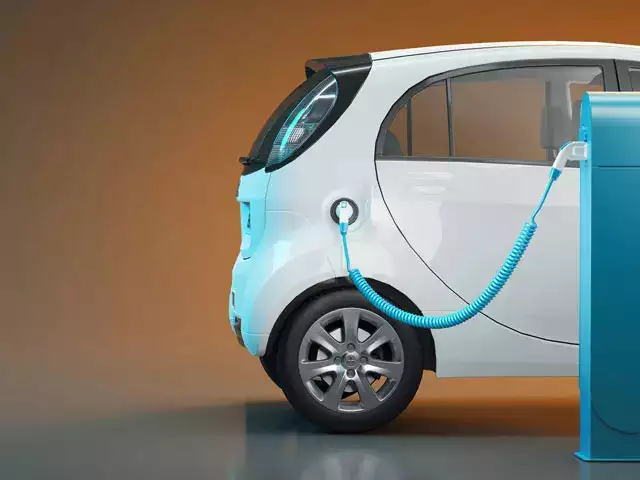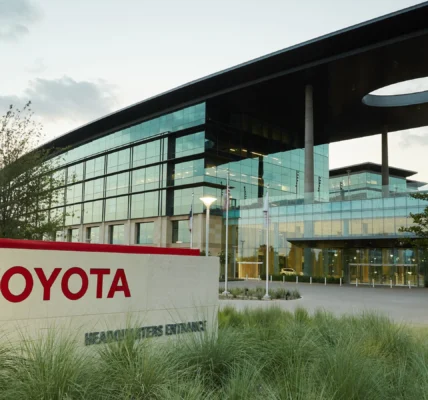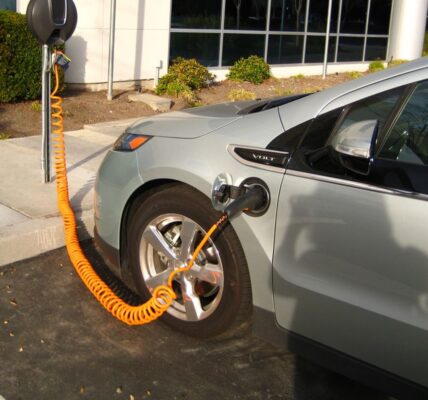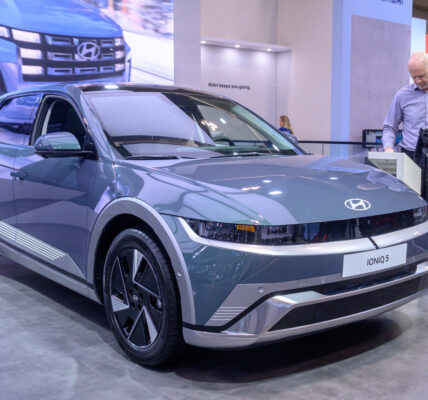When Tucson Mayor Regina Romero took office in 2020, one of her first actions was to declare a climate emergency in her city.
Romero said she was fulfilling a campaign promise to act boldly on climate change in one of the driest and warmest parts of the Southwest.
“We wanted to deliver results,” said Romero. “The people elected me because of my promises on climate.”
One of her first actions was to establish a climate and sustainability council made up of climate experts from the University of Arizona and Arizona State University to address environmental vulnerabilities within the city.
The council saw expanding electric vehicles within the city as one realistic approach to reduce the city’s carbon output and “become a leader in clean, convenient, and affordable transportation.”
“My climate and sustainability advisor kind of really did the research and saw what other cities were doing in terms of EV readiness,” said Romero. “And we created the EV readiness roadmap with them.”
As electric cars gain in popularity, the demand for charging sites will grow as well, and access to such sites remains one of the biggest roadblocks for the market. Tucson is one of three Arizona cities to begin implementing building codes that require EV-ready infrastructure at construction. Some local and state leaders fear that such requirements will drive up the cost of housing, but advocates say consumers will not buy electric vehicles if they don’t have any where to plug in and charge up.
Installing EV chargers at construction is cheaper than retrofitting later (something that experts say will need to be done as the market expands). A 2016 report from Energy Solutions for San Francisco found that the cost to install a Level 2 EV charging station during new construction was $920, while the cost of retrofitting was $3,550, making it 75% cheaper to install charging during new construction.
Tuscon’s EV roadmap outlines goals to reach carbon neutrality (a balance in the amount of greenhouse gas produced and the amount removed from the atmosphere) by 2030 and charts a plan to get there. The guiding principles of the roadmap were to provide clean air, accelerate clean energy and ensure a healthier future.
It highlights EV-ready building codes as one of the most effective and low-cost strategies to encourage EV adoption and to lower carbon emissions.
In 2021, the Tucson City Council adopted a code that requires EV-ready spaces for all new single-family duplexes and townhomes. All homes in the city are now required to provide a 40-amp circuit and a receptacle near a parking space.
In August 2022, council amended the code to require all new multifamily housing to be EV-ready. Starting in December, multi-family housing will be required to provide 10% of parking spaces with EV outlets. An additional 20% of spaces are required to have conduits that will allow for added EV outlets when demand grows.
The 2022 amendment also requires office buildings and retail spaces to be EV-ready.
New offices will be required to provide EV outlets for 5% of parking spaces and EV conduits for 15%. And new retail space must equip 5% of parking spaces with EV stations and 10% must contain conduits.
Romero believes this will rapidly expand access to charging across the city of 545,000 residents. She says when she took office, she noticed that public charging facilities were lacking in the city and concluded that implementing building codes was a realistic solution to address the problem.
“There’s not enough charging to begin with,” said Romero. “That’s why we wanted to make it much more universal in creating the codes and create that access to be able to have them anywhere.”
According to data from the U.S Department of Energy’s Alternative Fuels Data Center, Arizona ranks seventh in the nation for the number of registered electric vehicles. As of 2021, more than 41,000 electric vehicles are on roadways throughout the state, a staggering 41.6% increase from the previous year.
The center also reports that Arizona has 2,379 public charging ports, or roughly one port for every 17 vehicles, a gap expected to grow wider as sales increase.
The lack of public charging has resulted in “anxiety range,” concern for how far a vehicle can go before it needs more charge. J.D Power, a consumer research firm, says access to charging is the largest deterrent to consumers trading in their gas-powered vehicles for electric counterparts.
Southwest Energy Efficiency Project is a nonprofit that works across the southwestern U.S to promote and advocate for greater energy efficiency. Caryn Potter is the program utility manager.
“Electric vehicle infrastructure is key for consumers to feel like they can make the switch to electric because of a well-known issue of range anxiety and the inability to currently charge,” she says. “When it comes to how consumers make their choices on transportation, they want to feel comfortable that they can charge their vehicle no matter where they are like they are currently comfortable with gas vehicles today.”
She emphasized that without the additional infrastructure to support electric vehicles, a smooth transition to an electrified fleet will be much more difficult to achieve and will hinder climate goals set by leaders who hope to curtail carbon emissions.
Electric vehicle sales have been on the rise every year since Tesla released the first Roadster in 2008. The number of hybrid and electric vehicles in the U.S has grown by 80% in the last five years, including a fivefold increase in fully electric vehicles.
That number will likely increase as state and federal governments pass pro-electric vehicle policies and encourage consumers through subsidies aimed at reaching climate targets. Energy experts fear that demand will soon outpace the charging infrastructure currently available for EVs.
Earlier this year, California Gov. Gavin Newsom announce that California would ban sales on all internal combustion vehicles by 2035, and at least five states are expected to follow with similar laws soon, putting pressure on the auto industry to ramp up production of EV’s to keep up with policy.
Volkswagen, through a $91 billion investment, wants 70 electrified models by the end of decade . Toyota and Volvo want half of their sales to be electric by 2025. Hyundai is aiming for 34 EV models by 2025 and Honda expects two-thirds of all sales to be electric by 2030.
The transportation sector is the largest emitter of carbon in the U.S and the world. According to the EPA, a typical passenger vehicle emits about 4.6 million metric tons of carbon dioxide a year through tailpipe emissions. Since the industrial revolution, the burning of fossil fuels and other human activities have emitted more than 1.6 trillion tons of greenhouse gas emissions into the atmosphere and more than half of these emissions have come since 1990.
While electric vehicles rely on a grid powered by fossil fuels, experts maintain that removing gas-powered vehicles from circulation will reduce overall atmospheric levels of carbon significantly. A vehicle that operates exclusively on electricity will not emit any tailpipe emissions.
At the 2021 United Nations Climate Conference, 120 world leaders convened to address the most serious threats caused by climate change. The outcome was the Glasgow Climate Pact, to recognize the emergency at hand and accelerate action by moving away from fossil fuels.
Over 30 countries, six major vehicle manufacturers and other actors, like cities, set out their determination for all new car and van sales to be zero-emission vehicles by 2040 globally and 2035 in leading markets, accelerating the decarbonization of road transport.
Cleaning up the transportation sector through public policy is widely seen as the most viable way for governments to reduce overall emissions to reach carbon neutrality by 2050.








